-
![img]()
AskMeDoctor! Season 7 Episode 9: Understanding Rare Genetic Disorders: LSDs Explained
Zakwan Shah
April 09, 2025
7 min
Lysosomal Storage Diseases or LSDs is a rare genetic disorder that manifests itself as early as childhood. If left untreated, it can have a significant impact on young lives.
Now, as parents, this may be the first time you're hearing about this. While uncommon, it's still important to learn as much as we can about conditions and illnesses that can affect our little ones.
We had a chat with Dr Ngu Lock Hock, Department Head of Genetics, Clinical Geneticist and Paediatrician, Hospital Kuala Lumpur, to talk about lysosomal storage disorders or also commonly known as LSDs.Q1: What exactly are lysosomal storage disorders (LSDs), and how do they occur?
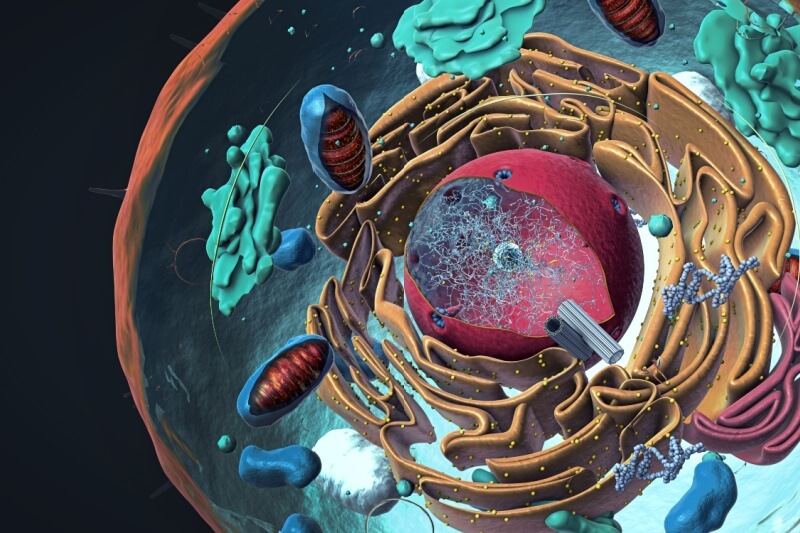
Lysosomal storage disease or LSD, are a group of about 50 different conditions, different diseases. They are grouped together as a lysosomal disease. All of these are genetic conditions.
If we look at our cell, it consists of many such organelle or side units. You have a nucleus which stores all the genetic material and one of the components of our cell is lysosome.
Inside this lysosome, you have various kinds of enzymes. So, lysosome functions like a recycle centre for our cell.
Imagine our cell components like cell membrane and other parts, over time, it gets torn and worn.
So, all of these materials, the old materials, will be sent to lysosome.
Inside the lysosome, there’s these various enzymes, they work together to process it. Those that can be reused, will be recycled. Those that cannot be reused, will be disposed of as waste.
The lysosome is actually like a waste disposal system for your body. These enzymes are made in our cells based on the instructions in our genes.
If there’s some mistake in the gene, the cells don’t get the information to make the correct enzymes for the lysosome. Because of this, certain waste products, waste material in the cell cannot be broken down.
So, these waste products, they will accumulate in this lysosome, in the cells, in the organs and it builds up in our body later on. This can happen in our cells as well.Q2: How common is this condition?
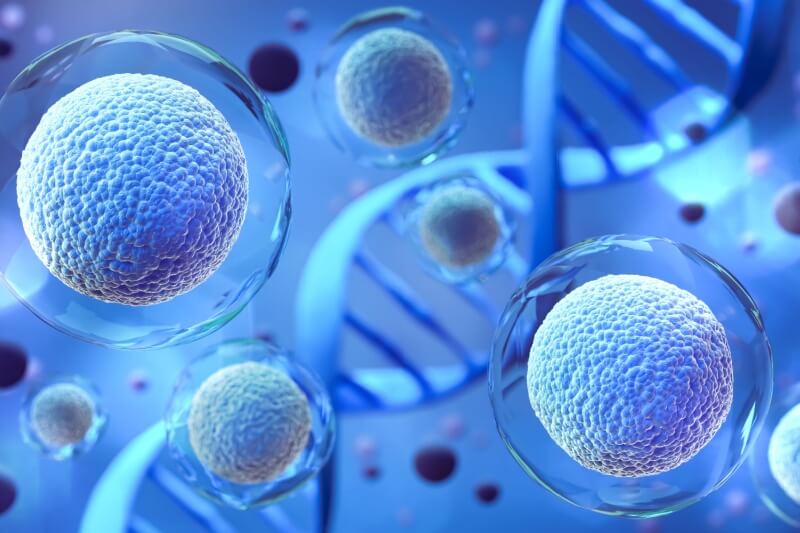
Each individual that I see, they are rare. But because you’re talking about more than 50 different conditions here, so, cumulatively, they’re probably not that uncommon. Maybe 1 in 250,000 people, to 1 in 500,000 people.
Some that I see are more common, in my personal clinical practice, will be Pompe disease, Gaucher disease, and mucopolysaccharidoses.
I know these are all difficult words to pronounce. You can call it in short term, MPS.
Even MPS, there are many types. There is Type 1, there is Type 2, there is Type 3.Q3: Let's talk about the symptoms. If a child has LSD, what might parents or caregivers notice about their child who has this?
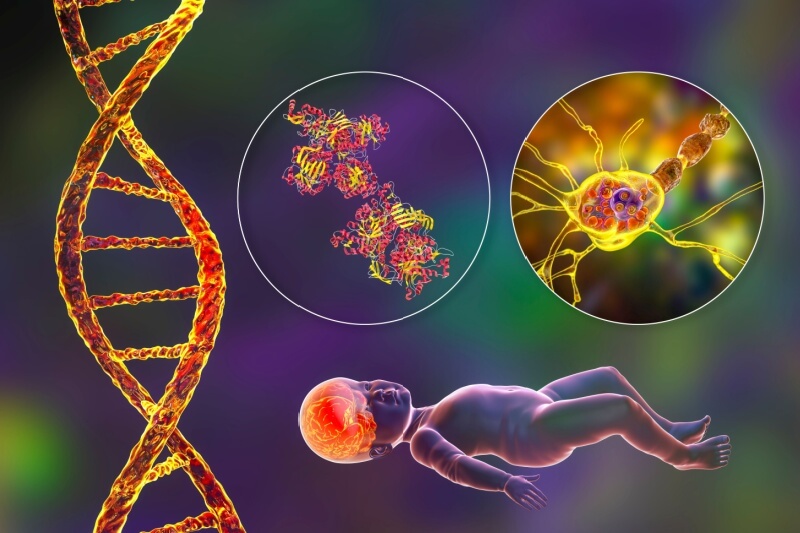
Obviously, this is not an easy job. Not only for the parents, sometimes even for the healthcare professional because we are talking about a rare disease here.
It can overlap on many other conditions. The clinical signs and symptoms can differ from disease to another disease.
So, first I will talk about Pompe disease.
For Pompe disease, there is an accumulation of the waste material that accumulates here is glycogen.
The tissues and the organs that are most affected is the muscle. So, it can be your heart muscle, it can be your lean muscle.
Even Pompe disease, you have early onset and the later onset time.
In the early onset, we are talking about, it can affect babies that are less than two years old.
So, usually, because it affects the muscle, it will result in what I call a floppy baby.
And they don't achieve their normal developmental milestones. They will have delays in walking, delays in all these motor developments.
And their heart muscles are also affected. Their heart muscles get enlarged. Because of this, they often have recurrent chest infection.
This can also affect adolescents and adults, where because of muscle involvement, they’ll have problems climbing stairs or taking part in sports activities. Or sometimes because of muscle weakness their spine which gets bent. We call this Scoliosis.
So, these are some of the manifestations we can see in LSD, in particular, Pompe disease.
Of course, other diseases like MPS, their management is slightly different.
So, in MPS, all the babies are born normal. Normal physically.
But the red flag will be like, they’ll get a runny nose that does not resolve even after getting treatment. They frequently get ear infections, like middle ear effusion.
Sometimes they get hernia, which is not something that’s common in babies. Hernia usually occurs in adults, especially. They can have hernia on both sides, right and left. This is very unusual, so that is another red flag.
The other thing will be because all this waste material accumulates in their body, under their skin.
So, their facial features will change with time, what we call ‘coarse’ in medical terms.
They can also deposit in the liver, in the spleen, so they get organ enlargement. The liver gets enlarged, the spleen gets enlarged. These are a few other red flags that I think parents can look out for.
But it's not necessarily that if you have the disease that present symptoms at a very young age, it means that people develop it later on in life. It depends on the severity of the genetic mutation.
So, they will manifest early - in early childhood. If their genetic mutation is less and milder, they will develop the disease in adulthood.Q4: How can parents differentiate between normal variations in development and something that is more serious, for example, like LSD?

Obviously, this is not an easy task. If you have noticed one of these red flags, the next step is to consult a doctor, such as a general practitioner or a paediatrician, so they can do some examinations.
Based on the clinical findings, there are certain tests that can be done to confirm whether this is LSD. So, basically there are three types of tests.
One, we look for the biomarker. So, like in MPS, we can check the child’s or person’s urine to see any accumulation of these abnormal waste methods.
Second, we can check the lysosomal enzyme. So, all these lysosomal diseases are due to a certain defect or deficiency in the enzyme. We can check all these enzymes through the blood sample.
Thirdly, of course, we can check the genes to see whether there was a mistake. So, these are the sort of tests that can be considered when somebody has certain signs or symptoms that may suggest that it’s LSD.
If the general practitioner or paediatrician are unsure, they can always refer to the Genetics Department in HKL. We can guide them through all this process.Q5: What happens if these conditions go undiagnosed?

All these LSDs, they are what you call progressive disease. Your cellular waste accumulate more and more everyday.
Obviously, with time, there’s more complications that may develop to the extent that it may affect the lifespan of a person - causing a lot of inconvenience and disability.
So, early diagnosis is important. Because among 50 different types of LSDs, about 10 different types have available treatments.
This treatment is called enzyme replacement therapy. This means that you replace the missing enzyme through intravenous infusion.
Of course, the treatment is more effective if we start it early, at the early stage of the disease. This is another important reason why we want to diagnose, detect this condition early.
Even in some countries, they have introduced what is called newborn screening programs. Every newborn they will check their blood, see whether they’ll be affected by one of these conditions. So, the treatment can be started as soon as possible.
Because that way, you're able to get rid of the toxins. But of course, for some LSDs, at the moment, there are no effective treatment.
But science is always progressing, so the possibility of other treatments like gene therapy or some other form of pharmaceutical therapy, probably will be found in the near future.
And I think it really shows that the importance of awareness as early diagnosis can make a huge difference in somebody's clinical health.Q6: What kind of support do you think parents can have? Is there some sort of support system for parents who have children that are going through this very rare disease?

This disease has a huge impact. Not only for the individual but the parents too. So, they obviously require some help from many people.
We do have some patient support groups locally. For example, Malaysian Lysosomal Disease Association. They can offer assistance or support to the patient and their family, to get them through this tough moment.
The Malaysian Lysosomal Diseases Association is a dedicated organisation committed to supporting families affected by lysosomal storage disorders.
Parents can learn more about their work and access valuable information at www.mymlda.com or follow their updates and initiatives at facebook.com/MLDA.
https://www.youtube.com/watch?v=QUmTE1HIxc4
Disclaimer: The information provided in this article is for informational purposes only and should not be considered as medical advice from Motherhood. For any health-related concerns, it is advisable to consult with a qualified healthcare professional or medical practitioner.
For more insightful stories and fun recipes, stay tuned to Motherhood Story!
-
![img]()
Ramadan Around the World: Unique Traditions That Make the Holy Month Special
Eisya Ereena
February 28, 2025
7 min
Ramadan is a time of fasting, reflection, and devotion.
While Muslims worldwide observe the same core practices, each culture adds its own special touch.
From glowing lanterns in Egypt to bustling bazaars in Malaysia, every country has traditions that make the holy month even more meaningful.
Let’s explore how different cultures celebrate Ramadan and the unique customs that bring communities together.
Egypt: Fanoos Lanterns and the Mesaharaty
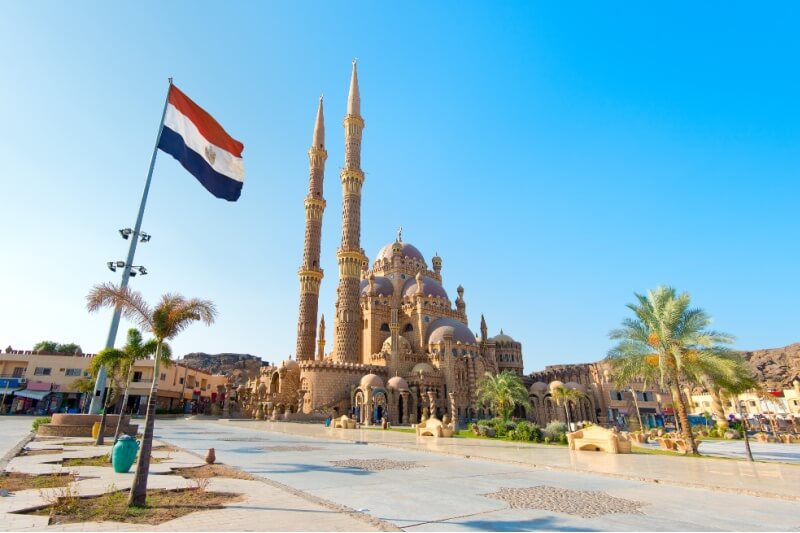
In Egypt, Ramadan is incomplete without Fanoos lanterns.
These beautifully decorated lights hang in homes, streets, and mosques, creating a warm and festive glow.
This tradition began during the Fatimid era, when lanterns were used to light the streets at night.
Over time, they became a symbol of Ramadan joy.
Today, families gift them to children as a way to mark the start of the month.
Another well-known tradition is the Mesaharaty.
Before sahur, a man walks through the streets, beating a drum and calling out names to wake people up.
In many areas, children wait eagerly to hear their names, making it an exciting moment before dawn.
Egyptian iftar meals often include khoshaf (a dried fruit and nut drink), mahshi (stuffed vegetables), and konafa (a sweet pastry soaked in syrup).
Families also gather for communal iftar meals in public spaces, ensuring that everyone has food to break their fast.
Turkey: Public Iftars and Ramadan Drummers

In Turkey, iftar is a community event.
Families, neighbours and strangers gather at long tables set up in mosques, parks, and town squares.
Some restaurants even offer free iftar meals, emphasising the spirit of giving during Ramadan.
A beloved tradition in Turkey is the Ramadan drummers (Ramazan Davulcusu).
These men, dressed in traditional Ottoman clothing, march through neighbourhoods playing drums to wake people for sahur.
This practice has continued for over 400 years, and in some areas, families tip the drummers as a token of appreciation.
At the end of Ramadan, Turkish families celebrate Eid al-Fitr, known as Şeker Bayramı (Sugar Feast).
Children receive sweets like baklava and Turkish delight as they visit relatives and neighbours.
Indonesia: Fireworks, Ngabuburit, and Eid Homecomings

Indonesia, home to the world’s largest Muslim population, welcomes Ramadan with lively traditions.
In Semarang, the start of the month is marked by Dugderan, a festival featuring fireworks, parades, and puppet shows.
During Ramadan, Indonesians observe Ngabuburit - a tradition where families spend time before iftar by strolling through parks, shopping at markets, or enjoying street performances.
Many stop by food stalls to buy traditional Ramadan snacks like kolak (sweet coconut dessert) and es buah (fruit ice drink).
As Ramadan ends, Indonesia experiences Mudik, one of the world’s largest annual migrations.
Millions of people travel back to their hometowns to celebrate Eid with family.
Roads, airports, and bus stations become packed with travellers, all eager to reunite with loved ones.
Malaysia: Ramadan Bazaars and Moreh Gatherings
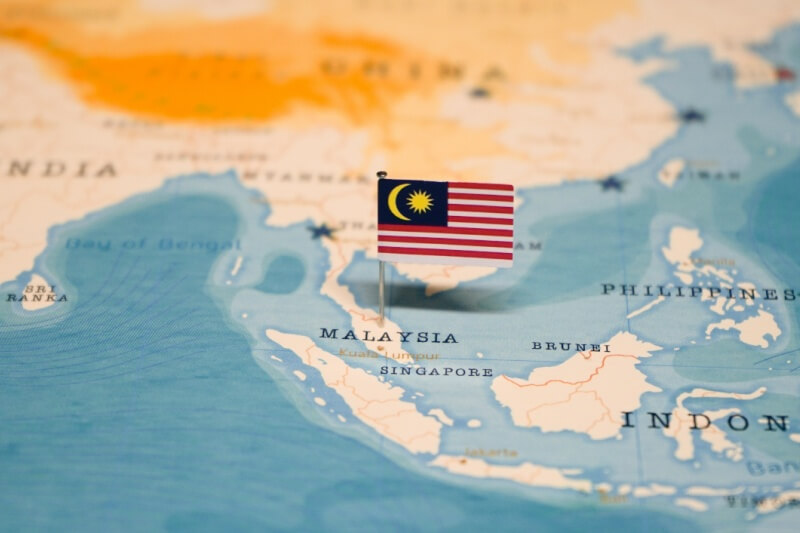
Ramadan in Malaysia is a feast for the senses, especially with its famous Ramadan bazaars.
Every evening, streets fill with vendors selling dishes like murtabak, ayam percik, and roti john. The aroma of grilled satay and fresh kuih fills the air, making it hard to resist a quick purchase.
Another important tradition is moreh, which takes place after tarawih prayers.
Mosques offer light meals such as bubur lambuk (spiced porridge), fried noodles, and traditional kuih.
These gatherings strengthen community bonds and give worshippers a chance to socialise after prayers.
During Eid al-Fitr (Hari Raya Aidilfitri), Malaysian families host 'open houses', inviting relatives, friends, and even strangers to enjoy homemade festive meals.
This tradition reflects Malaysia’s strong culture of hospitality and unity.
Morocco: The Nafar’s Call and Harira Soup

In Morocco, the Nafar signals the start of sahur.
This man, dressed in a traditional djellaba, blows a horn through the streets, a practice that has been followed for centuries.
Moroccan iftar meals begin with harira, a tomato-based soup made with lentils, chickpeas, and spices.
Other popular dishes include chebakia, a sesame honey cookie, and mint tea.
Families also gather for Ramadan storytelling sessions, where elders share folktales from Moroccan history.
On Eid, Moroccans wear embroidered kaftans and djellabas, visit family members, and exchange sweets as part of the celebration.
Pakistan: Street Iftars and Chaand Raat Festivities

Ramadan in Pakistan is deeply community-oriented.
Mosques and charity organisations set up free street iftars, ensuring that everyone has food.
Families also send trays of home-cooked food to neighbours as an act of kindness.
One of the most anticipated nights is Chaand Raat (Moon Night), the evening before Eid.
Markets stay open late as people shop for last-minute outfits, buy bangles, and apply henna.
The streets are bustling with excitement, making it a night of joy and festivity.
Eid morning begins with prayers, followed by family gatherings where people enjoy sheer khurma, a rich vermicelli dessert made with milk and nuts.
Senegal: Ndogou and Community Iftars

In Senegal, Ramadan is all about togetherness.
One of the most cherished traditions is Ndogou, where families and neighbours gather for communal iftar meals.
Senegalese iftar spreads typically include dates, coffee, bread, and lakh, a porridge made with millet and baobab fruit.
Many families prepare extra food to share with their neighbours, ensuring that no one breaks their fast alone.
Eid celebrations in Senegal are vibrant and filled with music, festive meals, and colourful traditional clothing.
Bangladesh: Iftar Delights and a Spirit of Charity

Ramadan in Bangladesh is a time of deep spiritual reflection and strong community ties.
The mosques fill with worshippers for extended prayers, including tarawih after the Isha prayer.
Streets and marketplaces come alive with festive decorations, adding to the excitement of the month.
The daily fast is broken with a traditional iftar spread, featuring popular dishes like jilapi (a sweet, deep-fried delicacy), piazu (spiced onion fritters), and beguni (crispy battered eggplant slices).
These foods are not just a source of nourishment but also an essential part of the shared iftar experience with family and friends.
Charity plays a significant role in Bangladeshi Ramadan traditions.
Acts of zakat (almsgiving) and food distribution to those in need increase, reinforcing the spirit of generosity.
Ramadan’s Universal Spirit with Unique Traditions

Despite the differences in customs, Ramadan’s essence remains the same.
It is a time of faith, reflection, self-discipline, and generosity.
From Egypt’s Fanoos lanterns to Malaysia’s bustling bazaars and Turkey’s Ramadan drummers, each country adds its own cultural touch.
These traditions bring people closer together, making the holy month more meaningful and memorable.
Wherever Ramadan is observed, it serves as a reminder of unity, gratitude, and community spirit.
Ramadan Mubarak with love from Motherhood! May Allah's blessings shine upon you and yours throughout this sacred month.
Disclaimer: The information provided in this article is for informational purposes only and should not be considered as medical advice from Motherhood. For any health-related concerns, it is advisable to consult with a qualified healthcare professional or medical practitioner.
For more insightful stories and fun recipes, stay tuned to Motherhood Story!
-
![img]()
Are Artificial Sweeteners Safe for Pregnancy?
Zakwan Shah
March 30, 2025
9 min
Sugar has long been synonymous with an unhealthy lifestyle.
When consumed in excess, it can cause all sort of negative side effects like weight gain, diabetes and many more
If you’re pregnant, your doctor may have told you to control your sugar intake.
After all, expectant mums are at much higher risk for developing diabetes compared to the average, non-pregnant person.
With pregnancy often causing a strong desire for sugary foods, it can be hard to deny that sweet tooth.
But does that mean you should avoid all those sweet treats entirely? Perhaps, perhaps not.
With sugar substitutes widely available in stores these days, there are plenty of loopholes you can jump through to satisfy those sugary cravings.
But hold your horse, mummies!
Let’s take a look first to see whether artificial sweeteners are okay for you and your baby.
Here’s what you need to know.What are Artificial Sweeteners

Artificial sweeteners are synthetic substances that act as replacements or substitutes to normal sugar.
They essentially provide sweetness to foods and drinks (without the added calories).
Common examples include aspartame, saccharin, sucralose, and acesulfame potassium.
They are a common ingredient nowadays in a variety of low-calorie food and beverage products. Everything from sodas to chewing gum and desserts.
However, you can also get artificial sweeteners in stores.
Unlike natural sugars like sucrose (table sugar), glucose or fructose, artificial sweeteners do not contribute to blood sugar spikes.
Artificial sugars are also much sweeter than regular sugar.
This means only a small amount is needed to achieve the desired sweetness.
Each artificial sweetener is made differently, often through chemical synthesis or modification of natural compounds.
Aspartame, saccharin and ace-k, for instance, are 100% lab-made, while sucralose mainly comes from sugar.
Stevia and monk fruit extract are plant-based sugar substitutes so they are the most 'natural' of all known artificial sweeteners.How Are Artificial Sweeteners Different from Sugar?
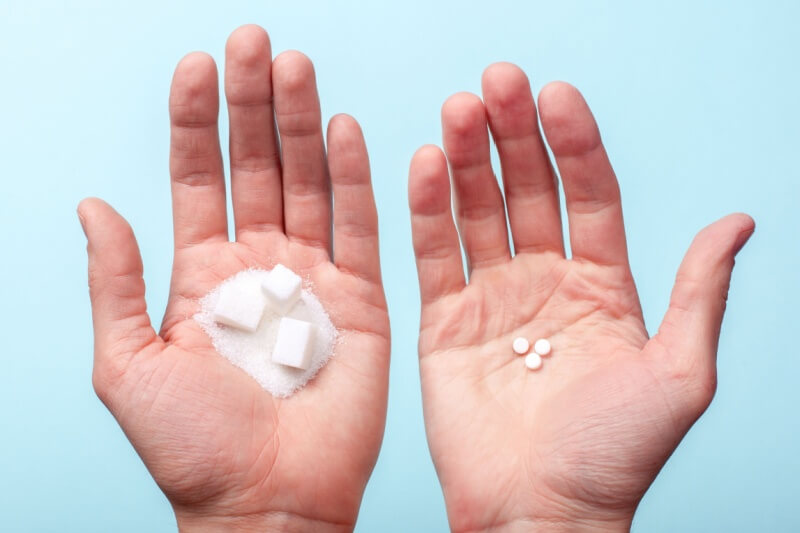
You may be wondering how different artificial sweeteners actually are from regular sugar.
As mentioned before, their manufacturing process is very different.
While sugar comes from plant material like sugar cane and sugar beet, artificial sweeteners are synthetically-made.
Even plant-based versions like stevia go through intense chemical changes before being fit for human consumption.
And the other main difference is their caloric content, of course.
A single gram of sugar contains approximately 4 calories.
On the other hand, the same amount of artificial sweetener has zero or negligible caloric value.
They are also 100 to 600 times sweeter than regular sugar and do not cause blood sugar spikes.
Artificial sweeteners also do not cause tooth decay the way consuming sugar does.
Unlike sugar, which provides energy and can contribute to weight gain, artificial sweeteners pass through the body largely unmetabolised, meaning they do not provide usable calories.
However, some concerns exist about their effects on metabolism, gut microbiota, and long-term health.
While artificial sweeteners help reduce calorie intake and control blood sugar levels, they do not offer the same natural functions as sugar, such as providing energy or feeding beneficial gut bacteria.
Their long-term health effects are still undergoing research.Are Artificial Sweeteners Dangerous for Pregnancy

The safety of artificial sweeteners has been a topic of debate. Even stevia has been criticised in the past for not being as healthy as scientists claim it to be.
This, of course, depends on the type of sugar substitute that you consume as different ones may have different effects.
During pregnancy, the consumption of certain artificial sweeteners has raised concerns.
Studies have suggested that intake of artificially sweetened soft drinks may increase the risk of preterm delivery.
Additionally, animal studies have shown that exposure to artificial sweeteners during pregnancy can lead to metabolic changes and altered taste preferences in offspring.
Potential side effects of consuming artificial sweeteners during pregnancy include an increased risk of preterm delivery and possible metabolic disturbances in the child.
Some studies have also found that aspartame, sucralose, and saccharin might contribute to metabolic dysregulation, potentially leading to weight gain and other health issues.
Given these findings, it's important for expectant mums to consult with their doctor before including artificial sweeteners in their diet.
They do this by disrupting gut microbiota and increasing insulin levels. This can sound contradictory to the earlier points about how sugar substitutes can help maintain weight.
But it’s important to remember that just like with regular sugar, moderation is key.
A class of sweeteners called sugar alcohols like xylitol, have been known to cause gastrointestinal issues.
If you take too much of them, they may cause diarrhoea, bloating, gas and other stomach problems.
For those who are worried about alternative sweeteners causing cancer, studies have found no significant association between artificial sweeteners and overall cancer risk.What Are The Benefits of Alternative Sweeteners
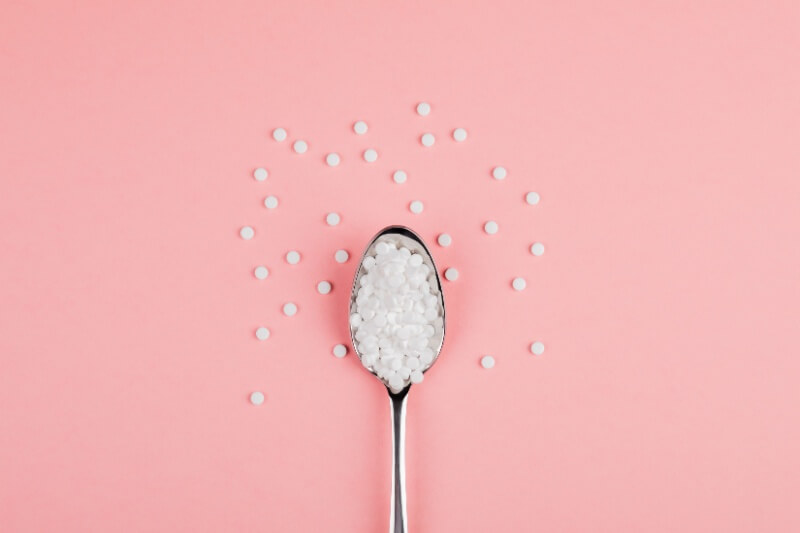
Artificial sweeteners offer certain benefits during pregnancy when used in moderation. in general, all artificial sweeteners help in some way when it comes to caloric management.
They help reduce calorie intake and assist in weight control, which is beneficial for individuals with diabetes or those aiming to control their weight.
This can be especially beneficial for expectant mums who have gestational diabetes or at high risk for the condition. Alternative sweeteners can ensure that you maintain a low level of blood sugar.
Artificial sweeteners provide a way to enjoy sweet foods and drinks without adding extra calories, potentially helping with weight management, especially for those who need to control their weight gain during pregnancy.
For pregnant women diagnosed with gestational diabetes, maintaining stable blood sugar levels is crucial.
Artificial sweeteners do not cause a rapid increase in blood sugar levels like regular sugar does, making them a potential alternative for those managing diabetes during pregnancy.
Some studies suggest that non-nutritive sweeteners do not significantly affect insulin response, making them a useful option for people with diabetes.
Pregnancy hormones can increase the risk of gum disease and cavities.
Since artificial sweeteners do not contribute to tooth decay in the same way as sugar, they may help reduce the risk of pregnancy-related dental problems.
Certain sugar substitutes like xylitol are even known to have protective effects on dental health.Recommendations for Artificial Sweetener Intake During Pregnancy
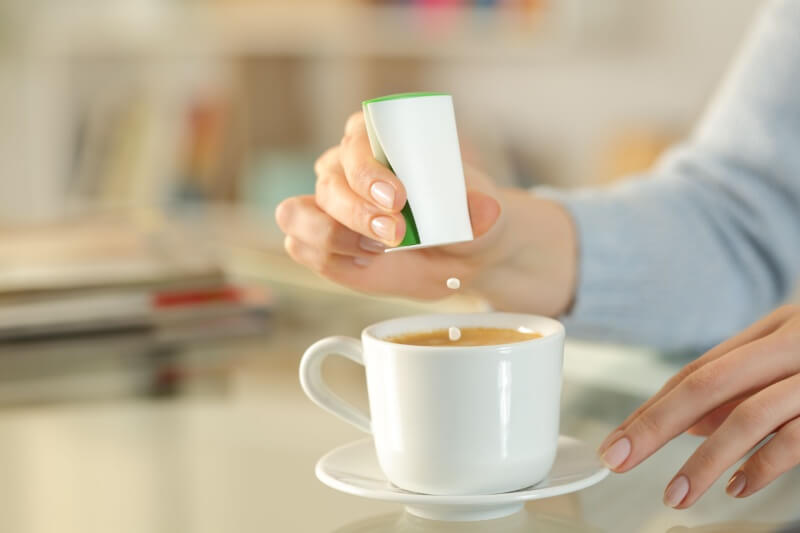
Experts advise that artificial sweeteners should not be a daily dietary staple during pregnancy.
You should only consume them occasionally, such as in a cup of tea or a small serving of artificially sweetened yogurt.
Relying on whole, unprocessed foods and natural sources of sweetness (like fruit) is preferable for overall health.
However, if you do want to include alternative sweeteners it’s important to stay within the safe limits.
Each artificial sweetener has an ADI, measured in milligrams per kilogram of body weight.
For example:- Aspartame: ADI of 40 mg/kg body weight/day (European Food Safety Authority)
- Sucralose: ADI of 5 mg/kg body weight/day (FDA)
- Acesulfame-K: ADI of 15 mg/kg body weight/day (FDA)
To put this into perspective, a 70 kg pregnant woman would need to consume several litres of diet soda daily to reach these limits.
While occasional consumption is unlikely to cause harm, frequent intake may pose risks, especially if combined with other sources of artificial sweeteners.
Some artificial sweeteners are safer than others during pregnancy:- Generally Recognised as Safe (GRAS): Aspartame, sucralose, acesulfame potassium (within ADI levels).
- To Be Avoided: Saccharin (as it crosses the placenta and may accumulate in foetal tissues).
- Limited Evidence: Stevia (natural but less studied in pregnancy).
Do Artificial Sweeteners Affect Your Baby?

The safety of alternative sweeteners during pregnancy has been a subject of debate.
The main focus of these studies are mostly on potential side effects on the developing foetus.
Studies have demonstrated that artificial sweeteners can cross the placenta, leading to foetal exposure.
Pregnant women with phenylketonuria (PKU) should avoid aspartame, as their bodies cannot break down phenylalanine, which can cause developmental issues in the baby.
Some studies have also found some negative side effects to pregnancy, such as increased risk of preterm delivery, higher birth weight, and reduced gestational age.When to Avoid Artificial Sweeteners

Pregnant women should consume artificial sweeteners sparingly, keeping intake minimal and infrequent.
Because these substances do cross the placenta and doctors are still unsure of the long-term side effects, it's important to practice caution.
Occasional use in tea, coffee, or sugar-free snacks is generally safe, but daily or excessive consumption should be avoided.
Moreover, its important not to avoid carbs or sugars altogether as your baby still needs those nutrients to grow and develop.
You might also want to avoid certain sweeteners.
For instance, saccharin and cyclamate may carry potential risks if consumed during pregnancy.Satisfy Your Sweet Tooth Safely
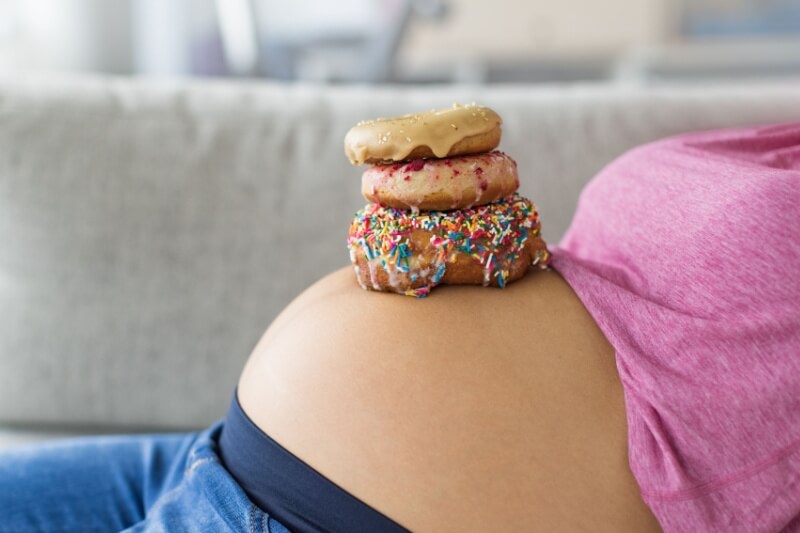
Cravings for sweet foods are common during pregnancy.
Artificial sweeteners allow expectant mothers to satisfy their sweet tooth without excessive sugar intake.
This can greatly help reduce the risks of obesity, insulin resistance, and other metabolic issues.
While artificial sweeteners can provide some benefits, it is essential for pregnant women to use them in moderation. Remember to choose those that have been deemed safe for pregnancy.
As always, we recommend you consult with a healthcare provider before making changes to your diet. Including adding alternative sweeteners as part of your regular menu.
There is no universal guideline on exactly how often a pregnant woman can safely consume artificial sweeteners, but health authorities recommend moderation.
The U.S. Food and Drug Administration (FDA) has established Acceptable Daily Intake (ADI) levels for different artificial sweeteners, which indicate the maximum amount considered safe to consume daily over a lifetime.
However, pregnant women should aim to stay well below these limits and use sweeteners sparingly.
Disclaimer: The information provided in this article is for informational purposes only and should not be considered as medical advice from Motherhood. For any health-related concerns, it is advisable to consult with a qualified healthcare professional or medical practitioner.
For more insightful stories and fun recipes, stay tuned to Motherhood Story!
-
![img]()
The Dos and Don’ts of Hari Raya Shopping: A Parent’s Survival Guide
Eisya Ereena
March 17, 2025
4 min
Raya shopping is a yearly tradition, but let’s be honest - it’s not for the faint-hearted.
Between the crowded malls, last-minute sales, and hungry, cranky children in tow, what should be a fun preparation for Hari Raya can quickly turn into a stressful, patience-testing experience.
For parents, the challenge is even greater.
Shopping isn’t just about ticking things off a list.
It’s about managing little ones, avoiding unnecessary spending, and making sure no one has a meltdown (including us parents).
With that in mind, here’s a simple survival guide on the dos and don'ts when shopping for Hari Raya.
The Dos: How to Make Raya Shopping Easier
Plan Your Time Wisely and Spread Out Your Shopping Trips

Shopping with tired, hungry children? A disaster is waiting to happen.
Instead of cramming everything into a single, exhausting day, try spreading out your shopping trips over a few days.
One day for clothes, another for groceries, and maybe a separate day for Hari Raya decorations and gifts.
If possible, shop during off-peak hours like the mornings and weekdays, which tend to be quieter compared to weekends and pre-iftar hours when the entire city seems to be at the mall.
And if a long shopping trip is unavoidable, bring snacks for non-fasting kids and schedule short breaks to keep everyone sane.
Make a Checklist and Stick to It
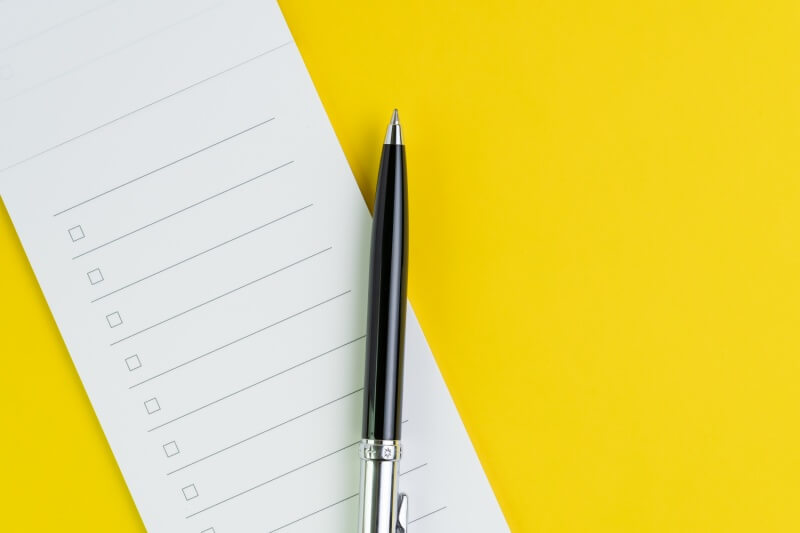
It’s easy to get distracted by flashy sales and beautifully packaged kuih raya.
Before you know it, you’ve spent way beyond your budget.
Having a checklist keeps things on track and helps you prioritise what you actually need.
Before heading out, sit down and list out exactly what you’re shopping for, from Hari Raya outfits to kitchen essentials.
This way, you won’t fall into the trap of impulse buying. Let's avoid unintentionally purchasing 7 different types of cookies.
It also helps to set a budget for any 'just-in-case' purchases because, naturally, something unexpected tends to find its way into our shopping cart.
Wear Comfortable Footwear
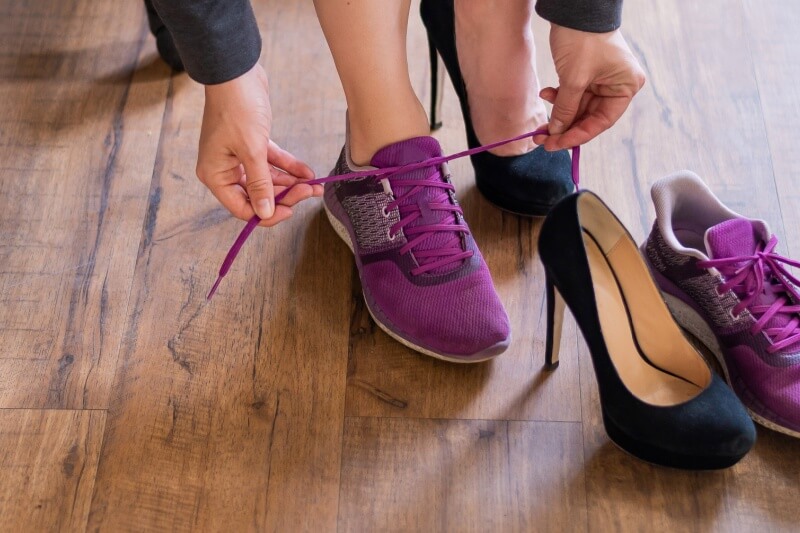
A shopping trip sounds fun until you’ve been on your feet for hours and your shoes start betraying you.
Comfortable footwear is a must. Not just for the kids but for everyone in the family.
Children should wear secure, non-slip shoes, especially if escalators are involved.
Mummies, if you’re planning a full-day shopping spree, leave the heels at home and opt for something practical.
Nothing ruins a Raya shopping trip faster than aching feet, sore blisters, or a grumpy child who 'can’t walk anymore.'
Take Safety Precautions When Shopping in Crowded Places
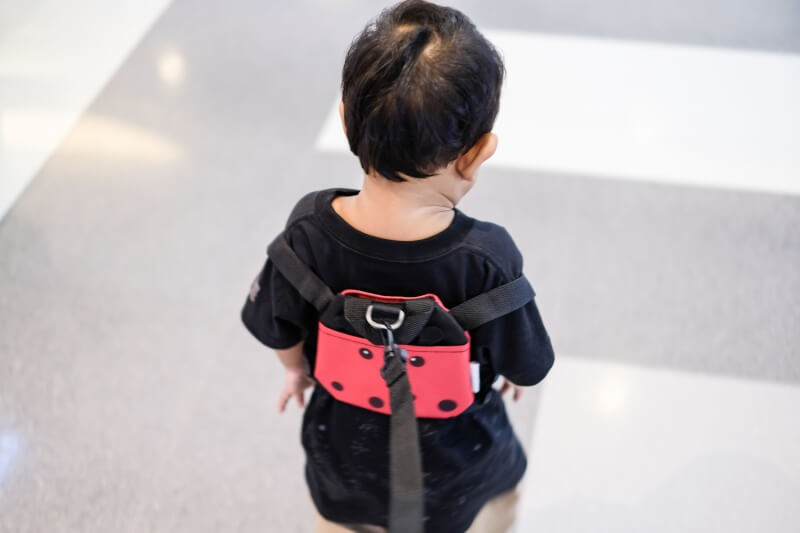
Malls during this period can be overwhelming.
One second your child is next to you, and the next, they’ve wandered off to look at something shiny.
Large crowds can be stressful, so it’s always better to take extra precautions.
For younger children, a parent-to-child wrist strap or backpack with an extended safety string can help keep them close.
If your kids are a little older, consider putting a GPS tracker in their pocket or bag for peace of mind.
Most importantly, teach your child what to do if they ever get separated from you.
Choose a safe meeting spot when you enter a mall, and make sure they know your phone number by heart.
Alternatively, you can also write your phone number on their wrist for extra precaution.
The Don’ts: What to Avoid When Shopping for Hari Raya
Don’t Leave Everything Until the Last Minute

It’s tempting to delay shopping until the final days of Ramadan, but this is when malls turn into a battlefield.
Last-minute crowds, endless queues, and out-of-stock items will only make the experience more stressful.
Shopping early saves time, energy, and frustration.
Essential items like Hari Raya clothes, home decorations, and dry food can all be purchased ahead of time.
If possible, buy online to avoid unnecessary trips to the mall.
By planning ahead, you could be relaxing at home on Raya Eve. While others may be running around a packed supermarket at the last minute.
Don’t Forget to Budget Wisely; Hari Raya Isn’t About Overspending

Preparing for Hari Raya can get expensive, especially without proper budgeting. Between new outfits to kuih raya and home decor, it’s easy to get carried away.
Set a realistic budget and separate 'needs' from 'wants.' Prioritise what’s necessary.
And if you really want to splurge on something, make sure it fits within your budget.
Remember, Hari Raya is about celebrating with loved ones, not about who has the most lavish decorations or the most expensive outfits.
Making Raya Shopping Enjoyable

Shopping for Hari Raya doesn’t have to be a stressful experience.
With a little planning, smart choices, and the right mindset, it can actually be an enjoyable part of the festive preparations.
By spreading out your shopping trips, staying within budget, prioritising comfort, and keeping safety in mind, you’ll make the entire experience smoother for yourself and your family.
What about you, my fellow parents? What are some of your best shopping survival tips for Hari Raya?
Disclaimer: The information provided in this article is for informational purposes only and should not be considered as medical advice from Motherhood. For any health-related concerns, it is advisable to consult with a qualified healthcare professional or medical practitioner.
For more insightful stories and fun recipes, stay tuned to Motherhood Story!
-
![img]()
How to Help Your Child Fast at School with Ease This Ramadan
Eisya Ereena
March 01, 2025
3 min
Fasting during Ramadan is a beautiful and meaningful experience.
But for some children, particularly those fasting at school, it can come with its own set of challenges.
In a diverse school setting where not all students are fasting, it’s natural for kids to have questions.
Some may be fasting for the first time, while others might already be used to it but still struggle with the long hours.
As parents, these moments become opportunities for important conversations that help our children understand, navigate, and embrace Ramadan with pride.'Why Are My Friends Eating, But I Can’t?'

One of the biggest questions children may often ask is why they can’t eat while their classmates can.
Sitting in a classroom, watching friends pull out snacks or eat lunch while they have to wait until Maghrib can feel unfair.
It’s important to explain that fasting is not a punishment but rather something special that they are doing.
Instead of focusing on what they can’t do, encourage them to see fasting as a personal challenge, something that helps them build strength, patience, and empathy.
Remind them that just as they are fasting, others are not, and that’s okay.
Ramadan teaches respect and understanding for different people’s choices, and this is an opportunity for them to learn how to navigate that with kindness and confidence.'Why Do I Feel Tired While My Friends Are Running Around?'

The noticeable drop in energy as the day goes on can be frustrating, especially when they can’t keep up with their friends during recess or when they feel exhausted after just a few laps of running around the classroom.
This is a great time to introduce the idea of managing their energy wisely.
Comparing their body to a phone battery that needs to last the whole day can help them understand why pacing themselves is important.
Encourage them to engage in gentler activities like reading, drawing, or chatting with friends rather than running and playing as they usually would.
Reassure them that it’s completely normal to feel tired and that taking care of their body is part of the fasting experience.'Why Is the Day So Long?'

The long wait for iftar can feel endless, especially when hunger and thirst start to set in.
One way to make the day feel shorter is to break it into smaller sections.
Instead of thinking about the entire duration of the fast, encourage them to focus on smaller milestones, such as getting through the morning, then recess, then another class before home time.
Giving them something to look forward to at home (like helping to prepare iftar) can also make the anticipation more exciting rather than just a waiting game.'Is It Okay If I Can’t Fast the Whole Day?'

Not all children will be able to complete a full fast, and that’s okay too.
Some might start with half-days, while others may struggle and need encouragement.
The key conversation here is to reinforce that fasting is a journey, not a competition.
Every child’s experience will be different, and it’s not about who fasts the longest.
Instead, it's about learning discipline and self-control at their own pace.
Whether a child makes it to mid-day or manages to complete the entire day, every effort should be acknowledged and celebrated.
The goal is for them to develop a love and appreciation for Ramadan rather than seeing it as an obligation they have to struggle through.Helping Kids Embrace Ramadan with Confidence and Joy

These conversations matter because Ramadan is about more than just abstaining from food and drink.
It is about patience, gratitude, and self-discipline.
By approaching these challenges with understanding, we can help our children navigate fasting at school in a way that makes them feel proud rather than discouraged.
With the right mindset, fasting at school can become a meaningful and empowering experience, one that helps them embrace Ramadan with confidence and joy.
For parents who have been through this, what are some ways you help your children manage fasting at school?
What conversations have helped them understand and enjoy the experience?
Let’s share and support each other in making Ramadan a beautiful and rewarding time for our children.
Ramadan Mubarak with love from Motherhood! May Allah's blessings shine upon you and yours throughout this sacred month.
Disclaimer: The information provided in this article is for informational purposes only and should not be considered as medical advice from Motherhood. For any health-related concerns, it is advisable to consult with a qualified healthcare professional or medical practitioner.
For more insightful stories and fun recipes, stay tuned to Motherhood Story!
Navigation
Our menu boxes are very flexible and easy to use




